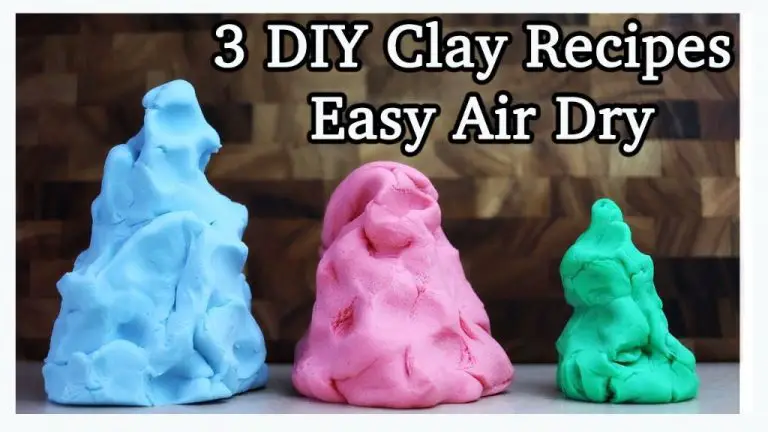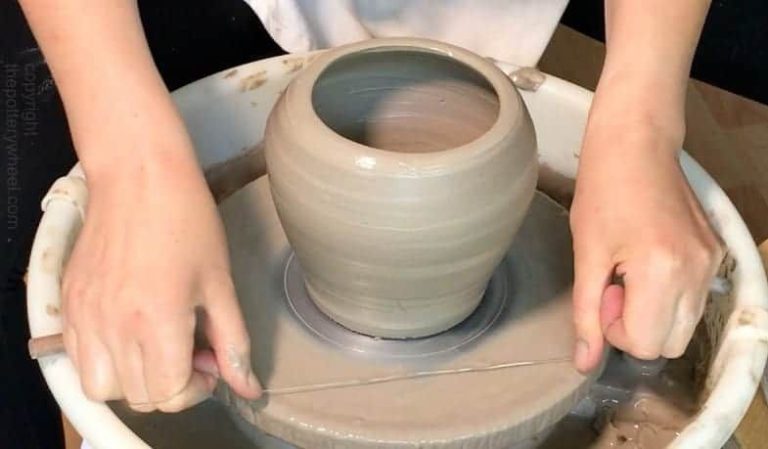How Do You Waterproof Terracotta?
Terracotta is a type of clay-based ceramic that is often used for pottery, sculpture, and construction materials like roof tiles. It has an orange-red color due to its high iron oxide content. One of the defining properties of terracotta is that it is porous and permeable to water. The clay contains small pores and holes that allow moisture to seep through.
While the porosity gives terracotta some benefits like breathability, it also makes it prone to water damage and staining. Moisture absorption can cause terracotta to deteriorate and lose structural integrity over time. Waterproofing helps protect it by sealing up the surface to prevent water from being absorbed.
There are several reasons why you may want to waterproof terracotta: to prevent leaks, minimize surface staining and discoloration, reduce efflorescence or mineral buildup, and extend its usable lifespan. Overall, waterproofing helps terracotta maintain its beauty and functionality when exposed to wet environments.
Assess If Waterproofing is Needed
Terracotta is a porous clay material that can absorb moisture. This means water can seep into the material and cause issues like erosion, staining, mold growth, and structural damage. However, terracotta only needs to be waterproofed in certain situations.
Waterproofing is recommended for outdoor terracotta objects or surfaces exposed to the elements like rain, snow, and humidity. For example, you’ll want to waterproof an outdoor terracotta pot, fountain, or tiled surface. Waterproofing provides an added layer of protection against water absorption and damage.
Indoor terracotta items like vases, cookware, and décor usually don’t need to be waterproofed. Since they aren’t subjected to outdoor weather conditions, the risk of excess moisture exposure is low. Waterproofing also alters the natural look and feel of terracotta, so it’s best avoided indoors unless you notice water absorption problems.
In summary, waterproofing is primarily needed for outdoor terracotta objects, while indoor items generally don’t require it. Consider the material’s exposure to moisture when deciding if waterproofing is necessary.
Cleaning and Prepping
Before applying any waterproofing sealant, it’s crucial to thoroughly clean the terracotta to remove any dirt, dust, oils or existing coatings that could interfere with adhesion. Here are the recommended steps for prepping terracotta:
- Use a stiff brush and mild detergent to scrub away any dirt or buildup. Rinse thoroughly afterwards.
- Check for any existing sealants or waxes – these should be stripped off using a chemical paint stripper or by sanding.
- Use a clay bar to remove contaminants from the pores and absorbent surface of the terracotta.
- Allow the terracotta to dry completely before moving to the sealing stage.
- Lightly sand the terracotta with fine grit sandpaper to improve sealant adhesion and open the pores.
- Wipe down with denatured alcohol using a lint-free cloth to remove any remaining dust or oils.
Proper cleaning and surface prep allows the sealant to penetrate deeply and bond tightly with the terracotta for long-lasting water protection.
Sealing Options
When it comes to sealing terracotta, you have a few options to consider. The most common sealants used are:
Silicone Sealers
Silicone sealers are a popular choice because they are:
- Easy to apply – silicone can be brushed or rolled on.
- Flexible – the silicone allows the terracotta to expand and contract without cracking the sealer.
- Affordable – silicone sealers are relatively inexpensive compared to other options.
The downside is that silicone generally needs to be reapplied every 1-2 years for optimal performance.
Epoxy Resins
Epoxy resins create a hard, plastic-like coating over the terracotta. The pros are that epoxy:
- Is very durable and long-lasting – can last 5+ years before needing to be reapplied.
- Forms a waterproof barrier that prevents absorption.
- Can be tinted to change the color of the terracotta.
The cons are that epoxy is more difficult to apply, more expensive, and can crack if the terracotta shifts or moves.
Polyurethane
Polyurethane is a two-part sealant that creates a thick, rubber-like coating. Benefits include:
- Excellent adhesion and durability.
- Resistant to chemicals, abrasion, and weathering.
- Can last 5-10 years before reapplying.
The downside is that polyurethane is more difficult to apply than other options and can be prone to peeling or yellowing over time.
Applying Sealant
Applying the sealant properly is critical to getting an effective waterproof barrier. Follow these steps when applying the sealant:
-
Make sure the terracotta surface is fully prepped, cleaned, and dry before applying any sealant. This provides the sealant the best surface to adhere to.
-
Read and follow the product instructions for application directions. In general, use a paintbrush, roller, or rag to apply an even coat across the entire surface, making sure to get into crevices and edges.
-
Apply sealant generously but avoid pooling or puddling. It’s better to apply multiple thinner coats rather than one thick coat.
-
Allow each coat to fully cure and dry per product guidelines before adding an additional coat, usually 24-48 hours. Most sealers recommend at least 2-3 coats for waterproofing.
-
Maintain a wet edge as you work across the surface so overlaps dry together. Work in sections if needed.
-
Seal all sides and edges, not just the top surface. Pay extra attention to crevices, carved areas, grout lines.
-
Work in a well-ventilated area and wear protective gloves/gear as recommended on the product label.
Applying multiple coats as directed ensures the most complete, protective seal for waterproofing terracotta surfaces.
Curing and Drying Time
After applying a sealant to terra cotta, it’s crucial to allow adequate curing and drying time before exposing the terra cotta to water. This ensures the sealant has time to fully bond and create a water-tight barrier.
Curing and drying times can vary widely depending on the specific sealant used, environmental humidity levels, and whether the terra cotta is indoors or outdoors. Always refer to the product instructions for recommended cure times – this can range from 24 hours to 7 days.
Higher humidity will lengthen the cure time. If applied outdoors in humid conditions, drying can take significantly longer than the label states. Bringing sealed terra cotta indoors to cure in a controlled environment is ideal.
Do not allow water exposure until the sealant has fully cured. Early water exposure can compromise and damage the sealant before it has bonded correctly. Patience is key for effective, long-lasting waterproofing.
Maintenance
Terracotta can be porous and weather over time, so maintenance is key for keeping your terracotta waterproof. Plan to reapply sealant every 1-2 years, or more frequently depending on use and exposure to elements. Before reapplying, inspect the terracotta for any cracks, chips or damage that could allow water penetration – repair these areas first. Use a wire brush to remove any existing sealant that has worn away, and clean the surface again before applying a fresh coat of sealant. Allow proper drying time before the terracotta is exposed to moisture again.
Always check for signs of water damage or leaks after heavy rain or snow. Look for discoloration, drips, or moisture seeping through cracks. If you notice leakage, the sealant may need to be reapplied in problem areas. With proper prep work and sealant application, terracotta can remain water-resistant for many years. But expect to provide routine maintenance every season or two.
Limitations of Waterproofing Terracotta
While sealants can help make terracotta more water-resistant, they have their limitations. Keep in mind that sealants cannot completely waterproof terracotta or prevent all water absorption, especially for unglazed varieties.
Terracotta is a porous material that naturally absorbs moisture. Sealants aim to reduce the amount of water absorbed, but some moisture will still seep in over time. Unglazed terracotta is especially porous and absorbent compared to glazed versions.
Sealants also do not work as well on glazed terracotta pieces. The glazed surface repels sealants, making it challenging for them to properly penetrate the material. This can limit their effectiveness at reducing water absorption on glazed terracotta.
Setting realistic expectations about what sealants can and cannot do for waterproofing terracotta is important. While they provide valuable protection, sealants cannot completely waterproof terracotta or prevent all water damage long-term, especially for unglazed pieces. Proper maintenance and reapplication are needed over time.
Safety Tips
When working with sealants to waterproof terracotta, it’s important to take proper safety precautions.
Make sure the working area is well-ventilated. Sealants and solvents can emit harmful fumes as they cure and dry. Opening windows and doors or using fans can provide airflow to dilute vapors.
Wear protective equipment like safety goggles, gloves, and a respirator mask rated for the specific products you’re using. This prevents direct contact with skin and inhalation of chemical vapors.
Follow all safety instructions on product labels and SDS sheets. Use any recommended or required personal protective equipment.
Never eat or drink while handling sealants, and wash hands thoroughly after use. Store all materials properly when not in use.
Work carefully on a stable surface to avoid spills or falls. Clean any spills immediately according to product instructions.
Keep flammable solvent-based products away from open flames or sparks. Allow for proper ventilation during application and drying.
Dispose of unused product, rags, and other waste properly according to local regulations. Improper disposal can harm the environment.
With proper safety practices, you can successfully waterproof terracotta while avoiding potential hazards.
Conclusion
Waterproofing terracotta planters and pots is an important process that helps protect them from damage caused by water exposure and absorption. As we covered, the key steps include thoroughly cleaning the terracotta, choosing an appropriate sealant, applying it correctly and evenly, allowing proper cure time, and maintaining the sealant layer. While waterproofing terracotta pots yourself is certainly doable, for large planters or expensive ornamental pots, considering hiring a professional may be wise to ensure it’s done properly.
With the right preparation and sealant, waterproofing allows you to fully enjoy these beautiful terracotta containers without worrying about cracks, leaks or deterioration. Just be sure to use caution when working with sealants and follow all safety guidelines. We hope this overview gave you the knowledge needed to successfully waterproof your terracotta pots and extend their lifetime.



